#Smithsonian
Explore tagged Tumblr posts
Text
Walnut the Crane dead at 42
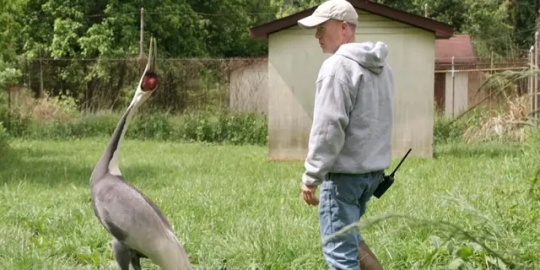
White-naped Crane Walnut and her keeper/husband, Chris Crowe, in 2021. (Photo: Roshan Patel via NZCBI)
Internet sensation Walnut the Crane became ill on January 2, 2024 and passed away at age 42 at her home at the Smithsonian's National Zoo and Conservation Biology Institute (NZCBI) campus in Front Royal, VA. A necropsy revealed the cause of death to be renal failure. Walnut far outlived the average life expectancy for White-naped Cranes in captivity, which is 15 years. She leaves behind her husband, zookeeper Chris Crowe, with whom she had 8 offspring, including two housed at the NZCBI: daughter Brenda, age 18, and a granddaughter, age 1.
“Walnut was a unique individual with a vivacious personality,” Crowe said. “She was always confident in expressing herself, an eager and excellent dancer, and stoic in the face of life’s challenges. I’ll always be grateful for her bond with me. Walnut’s extraordinary story has helped bring attention to her vulnerable species’ plight.” (x)
White-naped Cranes are native to Mongolia, northeast China and southeast Russia, wintering in the Korean DMZ, Japan, and China. Habitat loss to agriculture, development, and ongoing droughts are factors in their decline, leaving them classified as Vulnerable by the IUCN. Walnut was an important contributor to efforts to restore the species.
Edit: for those unaware, I refer to the zookeeper as her husband because Walnut was imprinted on humans, meaning she considered him her mate and performed displays and courtship for him. As a zookeeper he was responsible for artificially inseminating the bird. This and more was the source of her viral fame.
#walnut the crane#conservation#crane husband#birds#white-naped crane#smithsonian#I visited the NZCBI last year and could hear various crane calling on campus
4K notes
·
View notes
Text
A New Zapotec City has Been Found!

310 notes
·
View notes
Text

The Smithsonian Museum of American Art, Washington, DC
photo: David Castenson
348 notes
·
View notes
Text
Is the Smithsonian hiding the truth about the Grand Canyon? 🤔
#pay attention#educate yourselves#educate yourself#knowledge is power#reeducate yourself#reeducate yourselves#think about it#think for yourselves#think for yourself#do your homework#do your own research#do your research#ask yourself questions#question everything#smithsonian#grand canyon#hidden history#history#history lesson#government corruption#cover up#lies exposed
475 notes
·
View notes
Text

Todd Hido, #10552-c, 2011
292 notes
·
View notes
Text
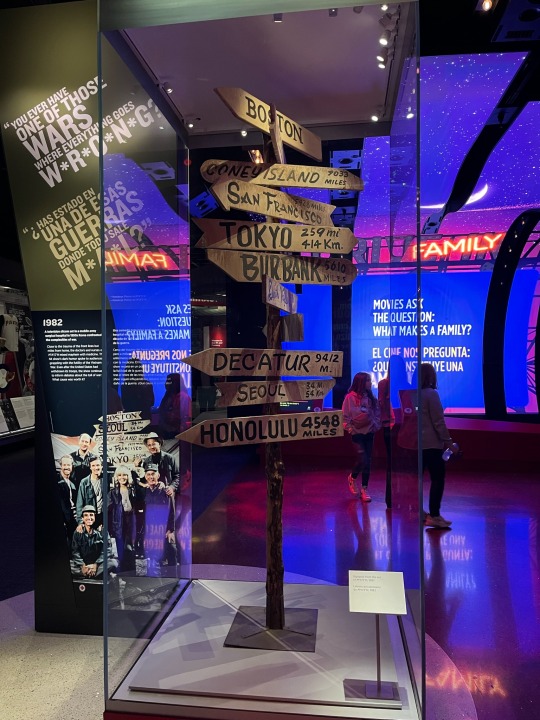
What's up MASHblr I went to the National Museum of American History last week and they had the signpost on display and I was sooo normal about it I swear
#i didn't know it was there so I had a Moment when I turned and saw it#mash#m*a*s*h#mashblr#national museum of american history#smithsonian#also the group photo on the side. precious#i promise I am capable of being average#personal
1K notes
·
View notes
Text
By some accounts, Desdemona was played by Margaret Hughes, one of the first few actresses hired by the King’s Company in 1660. A cast list from a production of Othello nine years later lists Hughes as Desdemona. Despite the long gap in time, theater critic Rosamond Gilder argued in Enter the Actress, a role “belonged” to the actor or actress who first played it to the public’s satisfaction and was only given up “on retirement or under extraordinary circumstances.”
160 notes
·
View notes
Text
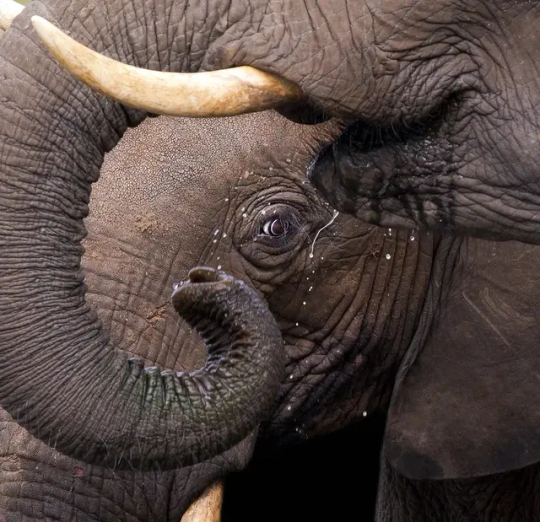
Day 922 of posting pictures of elephants.
Source: Soma Owen
#smithsonian#smithsonian magazine#cute animals#cuteness#elephant#image of the day#not my image#cuteness overload#elephants#wildlife#adorable#nature
259 notes
·
View notes
Text

Edit after Martin Engelbrecht (Flowers) (4) (Smithsonian) (Ed. Lic.: CC BY-NC 3.0)
197 notes
·
View notes
Text
instagram
How the National Portrait Gallery fumbled the exhibition of a queer artist’s tribute to their dead partner.
full article at Out:
124 notes
·
View notes
Text
I will never forget the first time I encountered the groundbreaking 1991 work of Cuban-born queer artistFelix González-Torres called "Untitled" (Portrait of Ross in L.A.).
A pile of shiny candies in a museum gallery beckoned me to hesitantly grab and eat one. Then I read the label explaining the installation: "This is González-Torres's unconventional portrait of his partner, Ross Laycock, who died of an AIDS-related illness in 1991. The candies' combined weight, 175 pounds, corresponds to Laycock's ideal weight before he got ill. Visitors are invited to sample the sweets. As the candy disappears, the pile shrinks in mass and weight, reenacting the debilitating effects of Laycock's illness."
When I understood the profound meaning of this installation as an AIDS memorial, and realized how, as the museum keeps replenishing the pile, Felix is giving his partner eternal life, I burst into tears, experiencing the transformative power of art.
Felix, who died from AIDS complications in 1996, invites the viewer to participate in his works, which combine a minimalistic aesthetic with a very personal and political stance imbued with identities tied to race, sexual orientation, and socioeconomic and immigrant status.
There is probably no artist more identified with the AIDS crisis than Felix — he once famously compared his role to "a virus, an imposter, an infiltrator" seeking to "always replicate myself together with those institutions" of power. His seminal works have turned him into one of the most important artists of the late '80s and early '90s, with his message reverberating louder than ever in our present times.
I recently flew to Washington D.C., to view a retrospective of Felix's work titled "Always to Return," showing at the Smithsonian's National Portrait Gallery until July 6.
My worries began when the exhibition's introductory sign omitted Felix's connection to the AIDS crisis, highlighting instead the "multiple dynamic meanings of his work." My fears turned into outrage when I read the museum label for "Untitled" (Portrait of Ross in L.A.), which, instead of explaining the installation's title and meaning, refers to "175 pounds as ideal weight," not specifically Ross's.
Also, the museum displays the candy on a narrow path along the floor instead of in a pile, expressing on a separate label that it is entitled to "decide the size and configuration for this installation as well as to whether to replenish the candy." Be that as it may, the Smithsonian's chosen set-up destroys the monumental allegorical and emotional impact of seeing Felix's candy pile diminish.
When I posted about this erasure on my Instagram on December 19, the post received a visceral response from hundreds of readers and museum visitors who shared my indignation, including a story posted by actor Matt Bomer, saying, "Please stop erasing queer history @smithsoniannpg. Honor the intent of the artists you display. Please help if you can."
The museum's social media account tepidly responded to my Instagram post: "The focus of the exhibition is to highlight Felix's revolutionary work in portraiture. Across the exhibition and its various locations, we have put his artworks in conversation with the museum's collection — including portraits of queer figures — to provide further context around the artist's practice." It also noted that "references" to Laycock and Felix's life are found "throughout the show."
The irony is that, by not explaining what Portrait of Ross in L.A. truly means, the National Portrait Gallery has turned his work into an esoteric cypher, depriving visitors from experiencing Felix's revolutionary work in portraiture. Instead of inducing emotion and tears, I witnessed people blissfully taking pictures of pretty candy — empty calories on the floor robbed of their stirring spirit.
Another exhibition label, which unfruitfully connects Felix's work to the queer literary icon Walt Whitman, "who requested medicinal candy for injured soldiers," also ignores a golden opportunity to explain Felix's intention. As the catalog is not yet available to supply additional information, even the museum's staff is in the dark. When I explained the installation's meaning to staff at the information desk, they gasped and said, "Now it makes sense."
What makes this erasure even more unfathomable is that it's taking place at the National Portrait Gallery, which included this same installation in a 2010 show, "Hide/Seek: Difference and Desire in American Portraiture."The show's co-curator, Jonathan D. Katz, described "Untitled" (Portrait of Ross in LA) in this Smithsonian video then as "an emblem of the AIDS crisis."
Katz explains in this video how "it was important for Felix to get his work in museums and, to do so, he had to speak indirectly about AIDS, bypassing the censorship and homophobic resistance that followed Jesse Helms and the crisis around the representation of gay male sexuality after the Corcoran Gallery canceled the Robert Mapplethorpe exhibition in 1989."
Katz also throws light into some of the evocative meanings elicited by "Untitled" (Portrait of Ross in L.A.): "When we put the candy in our mouth, we participate in the diminishment, directly and personally, of his partner. We also engage in the Catholic ritual of communion and potentially take contagion into ourselves."
Instead of exploring these poignant and provocative interpretations, it's devastating to see how the labels at the current Smithsonian retrospective focus on banal questions such as, "Can I eat a portrait? Is it OK to take something from a museum? Is this art whether or not I do these things? We leave these decisions to you."
#art#art history#LGBTQIA#censorship#AIDS#queer history#queer art#queer erasure#Smithsonian#read the whole thing
119 notes
·
View notes
Text
This original Uhura uniform is part of the Afrofuturism exhibit at the Smithsonian National Museum of African American History & Culture. The item on the left is the flight suit Trayvon Martin wore when he attended a program called Experience Aviation.
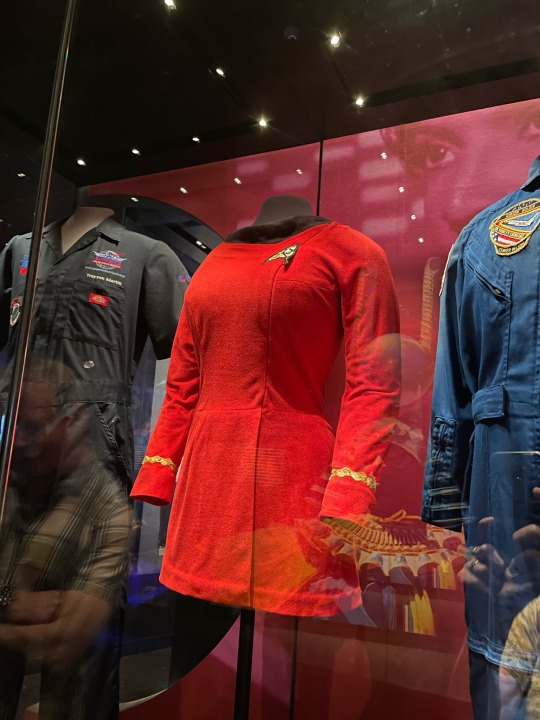
2K notes
·
View notes
Text



Glenn Kaino - Bridge - Fiberglass, steel, wire and gold paint, 2013-2014 - Smithsonian American Art Museum
photos: David Castenson
The sculptures segments are constructed from a life cast of the arm of American sprinter, Tommie Smith.
Tommie Smith and John Carlos raised their black-gloved fists in Black Power Salute in protest during the American national anthem at the 1968 Olympics in Mexico City, after finishing 1st and 2nd in the 200 meter sprint.

Tommie Smith and John Carlos
Unidentified Artist 1968
153 notes
·
View notes
Text
Space Marines 📡🛰️🚀 SUSTAIN
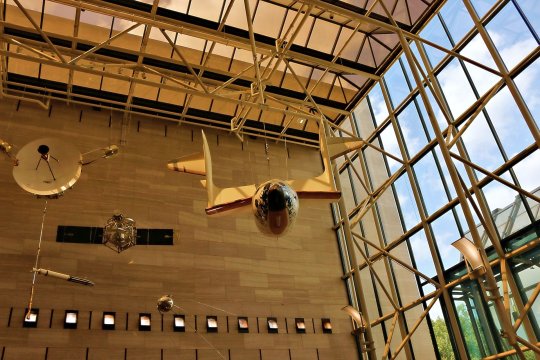
#NASM#Project Hot Eagle#White Knight#Space Ship One#Space Marines#SUSTAIN#Space#Science#Museum#Smithsonian#National Air and Space Museum#Independence Avenue#Washington D.C.
59 notes
·
View notes
Text
Many penguin species huddle together in massive colonies, but pairs of yellow-eyed penguins go out of their way to be alone, nesting deep in New Zealand’s scrublands and forests out of sight of other penguins. When pairs reunite at the nest after one has been away fishing, they greet each other with a piercing cry that Thor Elley, an endangered avian species researcher at the University of Otago with Māori roots, likens to “a whistling tea kettle rolling down a hill.” The species’ Māori name, hoiho, roughly translates to “noise shouter.”
Screaming and antisocial behavior may not seem like beloved traits, but these penguins are revered in Māori culture as taonga, or treasure, even gracing the country’s $5 bill. They are “protected by sacred origins,” Elley says.
But one of New Zealand’s favorite endemic birds is also one of its rarest. The International Union for Conservation of Nature estimates that only between 2,600 and 3,000 hoiho exist. About a third live on New Zealand’s South Island and nearby Stewart Island. The rest inhabit sub-Antarctic islands some 300 miles to the south. In the past 15 years, the northern population has plummeted by roughly 75 percent, and researchers expect that group could disappear within the next two decades if the trend continues.
The decline stems from a litany of factors. Red cod, once a pillar of the hoiho diet, has become scarce, and blue cod, although larger, are harder to catch, eat and feed to their chicks than other staple fish. Penguins also drown each year in commercial gillnets. And a pair of diseases, avian diphtheria and, since 2019, a mysterious and fatal respiratory illness, also infect virtually every chick. Janelle Wierenga, a veterinary scientist at the University of Otago and Massey University, says potential vaccines and drugs are likely years away.
To keep the species afloat, wildlife hospitals and conservation groups have taken the radical step of removing every single hoiho chick on the South Island from its nest and placing it in human care for its first week or so of life. Chicks are treated with antibiotics to heal the mouth sores caused by avian diphtheria. They’re also fed fish smoothies to boost their strength. It’s unclear how, but this extra care prevents chicks from developing the respiratory disease. “I’ve got the feeling that the diseases are a secondary problem, and the primary problem is the penguins don’t get the sustenance they need,” says Thomas Mattern, an ecologist at the University of Otago.
In 2023, the Dunedin Wildlife Hospital hand-reared 214 hoiho chicks. Without human intervention, 50 to 70 percent of those chicks would have died, Lisa Argilla, the hospital’s senior wildlife veterinarian and director, estimates. But these herculean efforts can only offer a short-term reprieve. “We are trying to buy this population as much time as we can,” she says. “You feel like you’re fighting a losing battle, but we couldn’t live with ourselves if we didn’t fight for these penguins.”
110 notes
·
View notes
